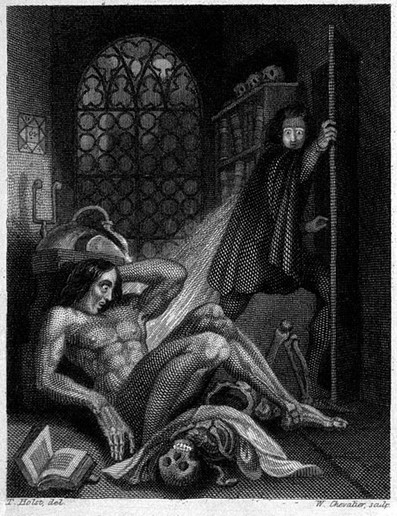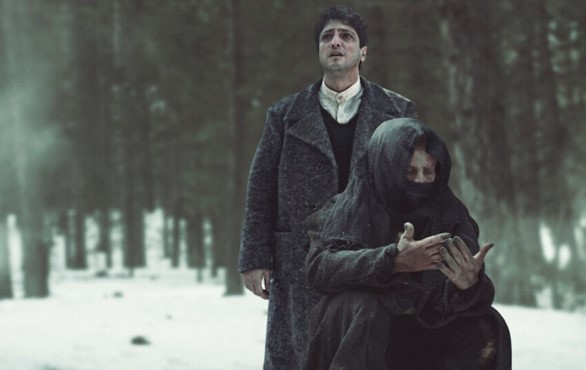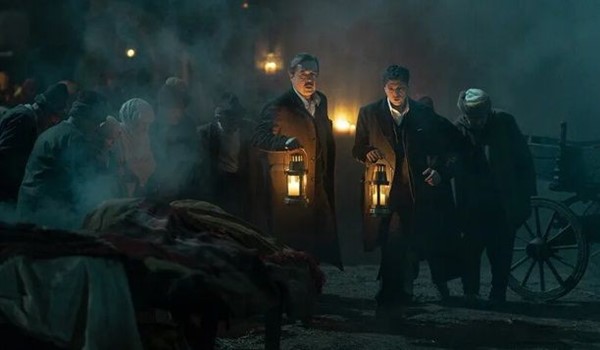Before mentioning Netflix's popular series "Creature", we need to start with its source, Frankenstein. In the preface of "Love and Pride," the editor Veysel Atayman states, "Gothic literature's rise is notable for its connection to the fear that emerged after the collapse of confidence in the enlightenment era's realm of reason, and its aesthetic relationship established with the bourgeois class in the historical scene is understandable."
The Story of Frankenstein and Prometheus

Frankenstein's full name is Frankenstein or The Modern Prometheus. Prometheus has a less-known myth. Prometheus, to avenge his grandfather, creates the first human from clay mixed with tears - the continuation of the story is well-known. Feeling compassion for humans, Prometheus steals the fire belonging to the gods and offers it to humanity. Prometheus giving the fire of the gods to humans leads to Zeus's endless wrath. Our story begins with humanity setting its eyes on giving life to what does not belong to it, much like Prometheus. Frankenstein's initially revolutionary act of bestowing life to the lifeless will lead him to infinite suffering, much like Prometheus, and everything will begin with Zeus's lightning.
A Glance at "Creature"

It has been a highly successful adaptation for Gothic and science fiction, genres that have not received sufficient recognition in Turkey. In the eight-episode fantasy series written and directed by Çağan Irmak, Ziya has been haunted for years by the prophecy book that everyone who reads it meets their end. In search of a way to give life and to study medicine, his father's profession, Ziya goes to Istanbul. His endless sufferings begin as he starts experiments with his mentor, a doctor like himself. Fearing the monster he created, Ziya abandons it and continues his life as if nothing happened. The creature, superior to humans physically but considered ugly, is left alone in the world without a caretaker. Not only will the creature be ostracized by humans for its physical appearance, but it may also be desired to be killed. The created being, angered by its creator for leaving it alone in this world, will not let Ziya go.
Çağan Irmak's Perspective
As an adaptation, there are many differences between the work and the series. What I liked was the truly rebellious nature of Ziya's prospective wife, Asiye. Unlike the book's author Mary Shelley, who was the daughter of a women's rights advocate, the main female character in the book is passive. In contrast to Elizabeth, who waits for years at home to marry Victor and continues to wait for him even in her final moments, Asiye in the series has no tolerance for Ziya's secretive and erratic behaviors.

Our 200-Year-Old Fears
Perhaps due to the fact that the era in which the book was originally written and today share similar problems, the series "Yaratılan" has succeeded on Netflix in capturing the audience's attention with its detailed set and storyline, coupled with its two-century-old theme. Enhanced viruses, smart devices, and even artificial intelligence... Every day, technology advances relentlessly, and people find themselves amidst new things unexpectedly. Paintings drawn without the need for an artist, songs sung without a singer, and translated works put individuals under stress for the continuity of their lives - the robot verification I solved the other day wasn't easy at all. Frankenstein died alongside his monster, and the threat in that universe came to an end. Is the same true for us?
Keywords: Netflix, Yaratılan, Series, Adaptation, Frankenstein, Prometheus, Science Fiction, Gothic Literature
References:
Shelley, M. (2018). Önsöz. V. Atayman (Ed.), Aşk ve gurur içinde (s. 9). Bordo Sı̇yah.
Karadoğan İsmayılov, E. & Sunal, G. (2013). “Frankenstein ya da Modern Prometheus” Romanının Sinemaya Uyarlanması . Çankırı Karatekin Üniversitesi Sosyal Bilimler Enstitüsü Dergisi , 4 (1) , 199-222.
Sıla Aras
Yücel Cultural Foundation
Voluntary Author
translated by Ekremcan Bakır
YKV Content:1517